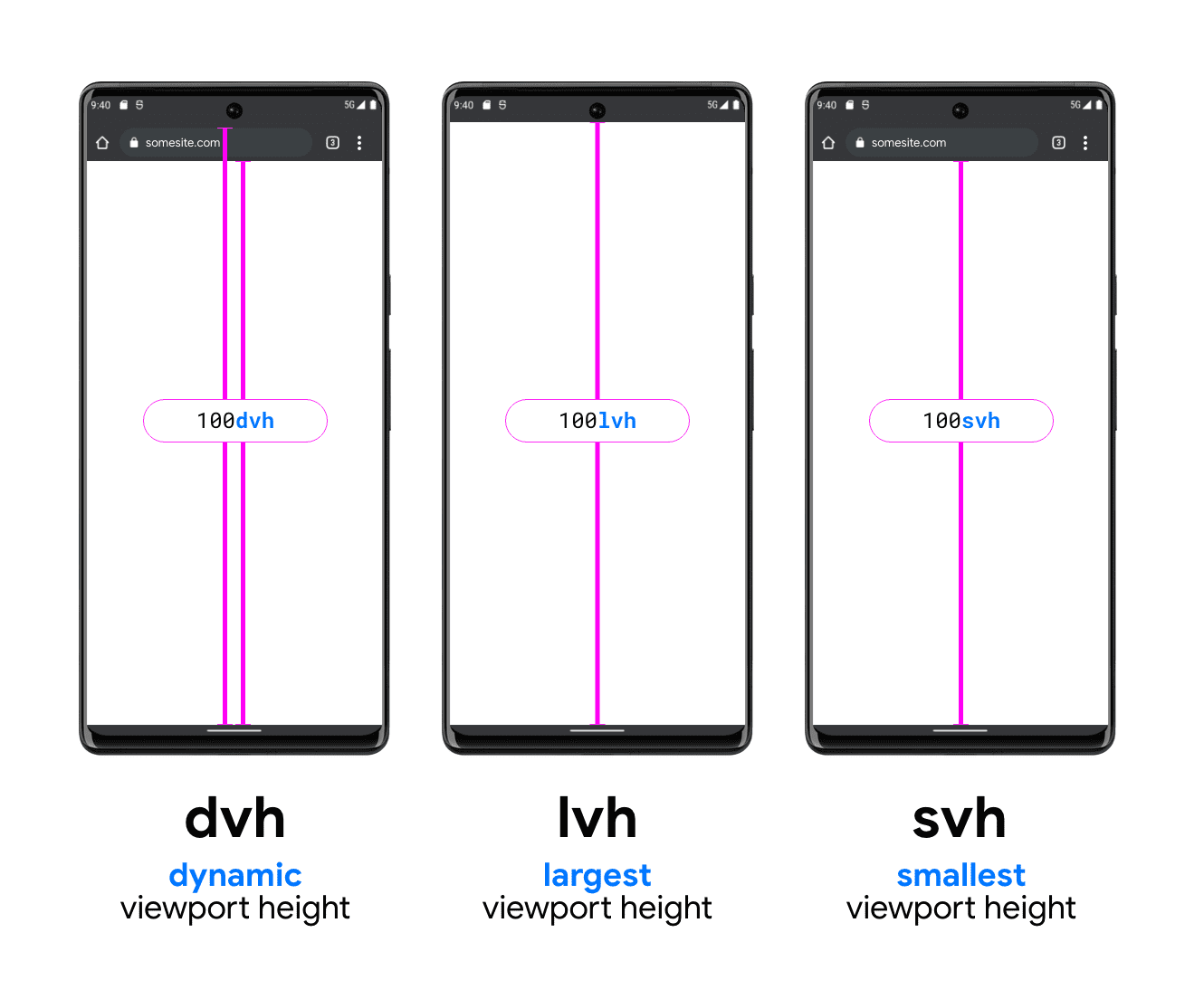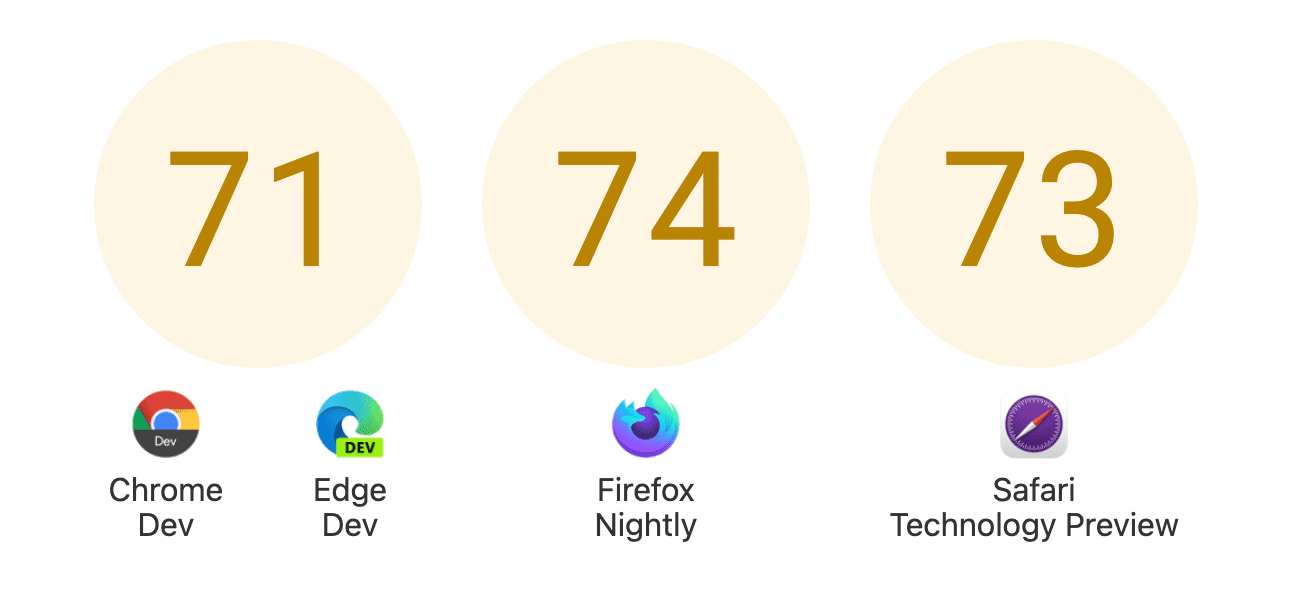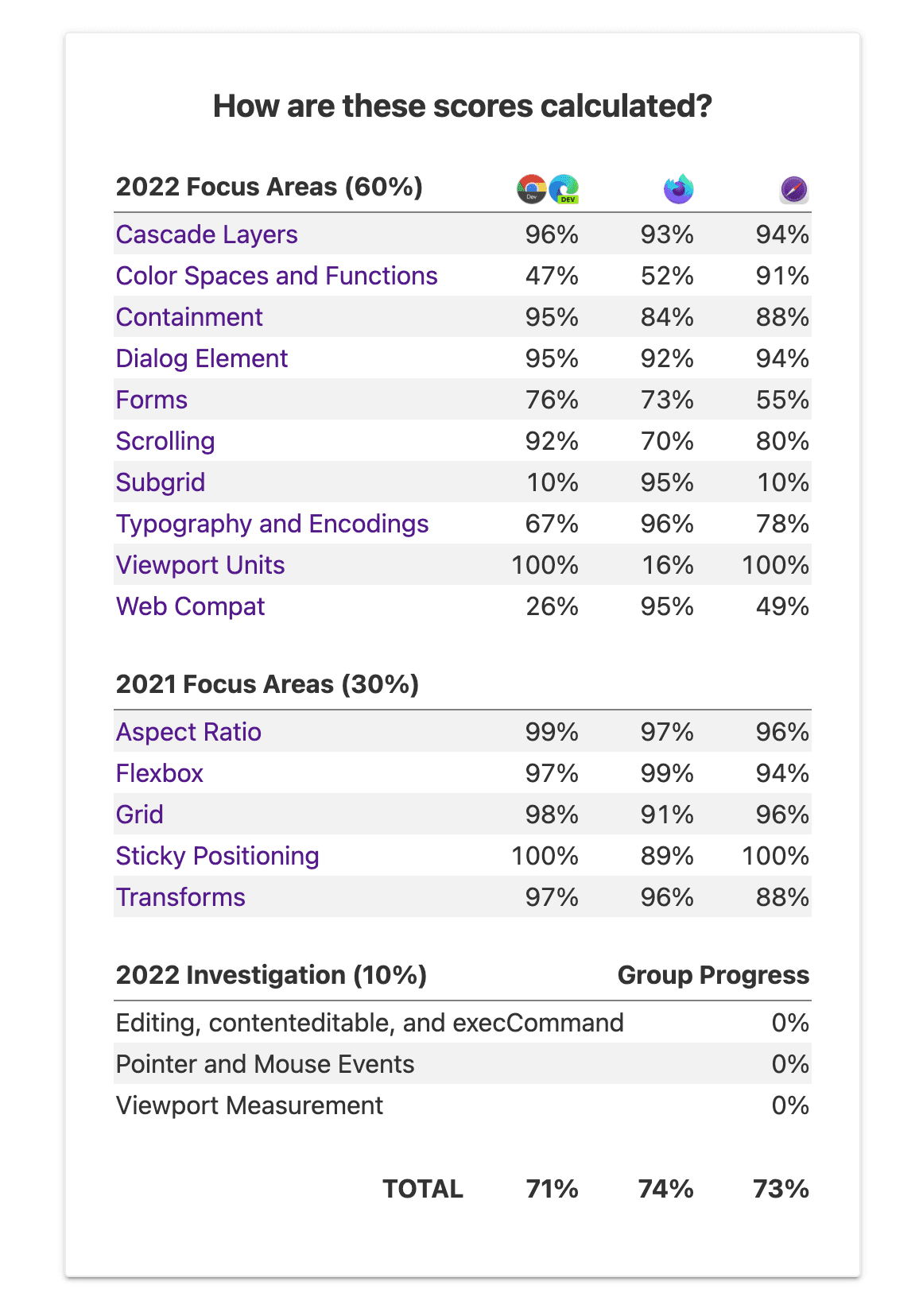For the first time ever, all major browser vendors, and other stakeholders, have come together to solve the top browsers compatibility issues identified by web developers. Interop 2022 will improve the experience of developing for the web in 15 key areas. In this article, find out how we got here, what the project focuses on, how success will be measured, and how you can track progress.
It all started in 2019
Back in 2019 Mozilla, Google, and others started a major effort to understand developers' pain points, in the form of the MDN Developer Needs Assessment surveys, and the deep-dive Browser Compatibility Report. These reports gave us detailed and actionable information to address top challenges for developers with the web platform, and led to the Compat 2021 effort.
Among other things, Compat 2021 led to creating a solid foundation for powerful features such as CSS grid (12% usage and steadily growing) and CSS flexbox (77% usage), including the gap property in flexbox, which solves a top pain point for developers when adopting new layout methods.
We were delighted to reach a score of over 90% across all implementations at the end of 2021!
What is Interop 2022?
Interop 2022 is a benchmark, agreed on by representatives of three major browser implementations, and developed through a process of public nomination and review with input from supporters Apple, Bocoup, Google, Igalia, Microsoft, and Mozilla.
The benchmark focuses on 15 areas, identified by developers as being particularly troublesome when they are missing or have compatibility issues across browsers. All browser vendors have agreed to focus on these areas, and everyone involved is excited to get started on making the experience of developing for the web measurably better.
The 15 areas of focus
The following features will be the focus of Interop 2022. They include 10 new areas, plus 5 carried over from Compat 2021. The new areas of focus are:
Cascade layers
Cascade layers give web developers more control over the cascade. They provide a way to group selectors into layers, each with its own specificity. This means you don't need to order selectors carefully or create highly specific selectors to overwrite base CSS rules.
Color spaces and CSS color functions
To use color functions in a design system, you currently need to rely on Sass, PostCSS, or calc() on HSL values. Color functions built into CSS mean that colors can be dynamically updated, and new color spaces remove the restriction to the sRGB gamut, and perceptual limitations of HSL.
There are two functions defined in CSS Color Level 5 that enable more dynamic theming on the web platform:
color-mix(): Takes two colors and returns the result of mixing them in a specified color space by a specified amount.color-contrast(): Selects from a list of colors the color with the highest contrast to a specified single color.
These functions support expanded color spaces (LAB, LCH, and P3), and in addition to HSL and sRGB, they default to the uniform LCH color space.
New viewport units
Difficulties dealing with viewport sizing are prominent in both the MDN Browser Compatibility Report 2020 and the new State of CSS 2021 survey. CSS Values and Units Level 4 adds new units for the largest, smallest, and dynamic viewport sizes, lv*, sv*, and dv*. These units will make it easier to create layouts that fill the visible viewport on mobile devices while taking the address bar into account.

Additionally, the cross vendor team behind Interop 2022 will collaborate on researching and improving the state of interoperability of existing viewport measurement features, including the existing vh unit.
Scrolling
The 2021 Scroll Survey Report confirms that scrolling features and scrolling compatibility are difficult to implement and have many areas for improvement. We'll focus on scroll snap, scroll-behavior, and overscroll-behavior to help scrolling be more consistent and smooth across platforms.
We are also exploring new scroll snap feature proposals.
Subgrid
The subgrid value of grid-template-columns and grid-template-rows means that a grid item that has display: grid applied can inherit the track definition from the part of the parent grid it is placed over.
For example, the following three card components have a header and footer aligned with the adjacent card headers and footers, even though each card has an independent grid. This pattern works because each card is an item that spans three rows of the parent grid, then uses subgrid to inherit those rows into the card.

Also included
- CSS Containment (the
containproperty) - The
<dialog>element - Form controls
- Typography and Encodings: including
font-variant-alternates,font-variant-position, theicunit, and CJK text encodings - Web Compat, which focuses on differences between browsers that have caused site compatibility issues affecting end users
The following areas made great progress through the Compat 2021 project, but there is still room for improvement. Therefore, they have been included in Interop 2022, in order that the remaining issues can be addressed.
- Aspect Ratio
- Flexbox
- Grid
- Sticky Positioning
- Transforms
Investigation efforts
In addition to the 15 focus areas, Interop 2022 includes three investigation efforts. These are areas that are problematic and need improvement, but where the current state of the specifications or tests aren’t yet good enough to be able to score progress using test results:
- Editing,
contenteditableandexecCommand - Pointer and Mouse Events
- Viewport Measurement
Browser vendors and other stakeholders will collaborate on improving the tests and specifications for these areas, so that they could be included in future iterations of this effort.
Measuring success and tracking progress

The existing web-platform-tests dashboard will be used to track the progress in the 15 focus areas. For each area, a set of tests have been identified. Browsers are then scored against these tests, giving a score for each area and an overall score for all 15 areas.
To follow along and track the progress, check out the Interop 2022 dashboard. Over the course of the year, you can follow along and see how the platform you build for is improving.

What will all this mean for developers?
The goal of these multi-year interoperability efforts, in the form of Compat 2021, Interop 2022 and much more, is to fully acknowledge and address the pain points developers have experienced through for many years. And it's not a one-browser effort but rather a strong collaboration between all major browser vendors and friends for improving the web platform across the board.
In essence, the goal is to make the web platform more usable and reliable for developers, so that they can spend more time building great web experiences instead of working around browser inconsistencies.
Let us know what you think
If you have feedback on the improvements made during Compat 2021, or on any of the features included in Interop 2022, we would love to hear from you. Which of these features will make the most difference to your work? What are you really excited about? File issues for the GitHub repo or let us know on Twitter.
More about Interop 2022 from:



